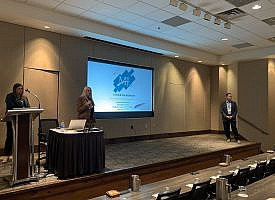Like other types of organizations across the country and beyond, institutions of higher education (IHEs) have struggled financially throughout the pandemic. Federal funds have eased the strain significantly, providing two previous infusions of cash through the Higher Education Emergency Relief Fund (HEERF). The American Rescue Plan (ARP) included a third round of HEERF grants, making $39.6 billion in new funding available as of May 2021 and extending the program through September of 2023.
Like HEERF I and II, HEERF III outlines specific rules regarding how the funding must be used and reported, but leaves room for interpretation that is causing uncertainty within the industry. IHEs that receive HEERF III funds in any amount should become thoroughly familiar with the program’s rules – especially those that differ from previous iterations of HEERF. The latest version carries new requirements for mandatory activities.
Mandatory activities for some HEERF III recipients
Like its predecessors, HEERF III includes both an institutional portion and a student aid portion, designed as two separate sub-programs within the broader program. Half of the funds received (the student portion) must be directed to student grants to help defray their cost of attendance and/or cover students’ emergency costs stemming from the pandemic (e.g., food, housing, healthcare or childcare).
IHEs can use the institutional portion to meet a variety of financial needs such as lost revenue, technology expenses for distance education, training and payroll. These funds can also reimburse the institution for previously incurred expenses (starting after March 13, 2020) of the same nature or can be issued to students as additional financial aid. However, there’s a big caveat.
As described in the Higher Education Emergency Relief Funds Comparison Chart created by the National Association of Student Financial Aid Administrators, if an institution uses any amount of its HEERF III institutional portion for anything other than emergency financial aid grants to students, a portion of the funds must be used to:
- “Implement evidence-based practices to monitor and suppress coronavirus in accordance with public health guidelines,” and
- “[C]onduct direct outreach to financial aid applicants about the opportunity to receive a financial aid adjustment by requesting professional judgment (PJ).” Reasons for an adjustment could include recent unemployment of the student (if considered independent) or a family member, as well as other circumstances that may necessitate a change in financial aid.
The new rules also apply to all expenditures on anything other than financial aid grants made with unused funds an institution may have remaining from HEERF I or HEERF II grants.
How much is enough?
The biggest issue in this new requirement is determining the appropriate portion of HEERF III institutional funds to devote to the two new required activities described above. While the U.S. Department of Education (ED)’s HEERF III FAQ #28 through #32 provides excellent examples illustrating the types of expenses that fit into these two categories, neither ED, nor Congress, have provided specific guidance regarding the percentage that is considered reasonable.
The FAQ states that “institutions should be guided by the Cost Principles in 200 CFR part 200 subpart E, which require that an institution spend a reasonable and necessary portion of its HEERF grant funds in order to successfully implement these two required grant activities.”
Unfortunately, the referenced section of federal code simply invokes the “reasonable and prudent” standard for any cost, given its nature and amount and the prevailing circumstances at the time of the decision. Without further guidance, institution leaders are left in a vast grey area, unclear on how to interpret and comply with the rules. This is where we recommend that you consult with your colleagues, peer IHEs, and professional advisors to collectively come up with what is “reasonable and prudent”.
More clarity on reporting requirements
The situation is less murky when it comes to reporting. ED has issued updated reporting requirements that should make it easier for HEERF III recipients to be certain they are in compliance. As with HEERF I and HEERF II, organizations that receive HEERF III funding must fulfill separate public quarterly reporting requirements for funds issued under the institutional and student aid portions of the program.
There is also an annual reporting requirement for HEERF III recipients, with details to be released at a future date. The ED does specify that this reporting, due early in 2022, will include a requirement for IHEs to include data on their use of HEERF I and II funds spent in 2021.
HEERF III offers much-needed support to IHEs, as well as the millions of students they serve. The funding will make a critical difference for many of these students and institutions, allowing them to emerge from the covid years without irreparable financial damage. But as with any vast federal program created rapidly in response to the urgent need, grey areas are unavoidable. You can count on the experienced advisors at Mauldin & Jenkins to help your institution navigate through these uncertainties and any others that arise.



